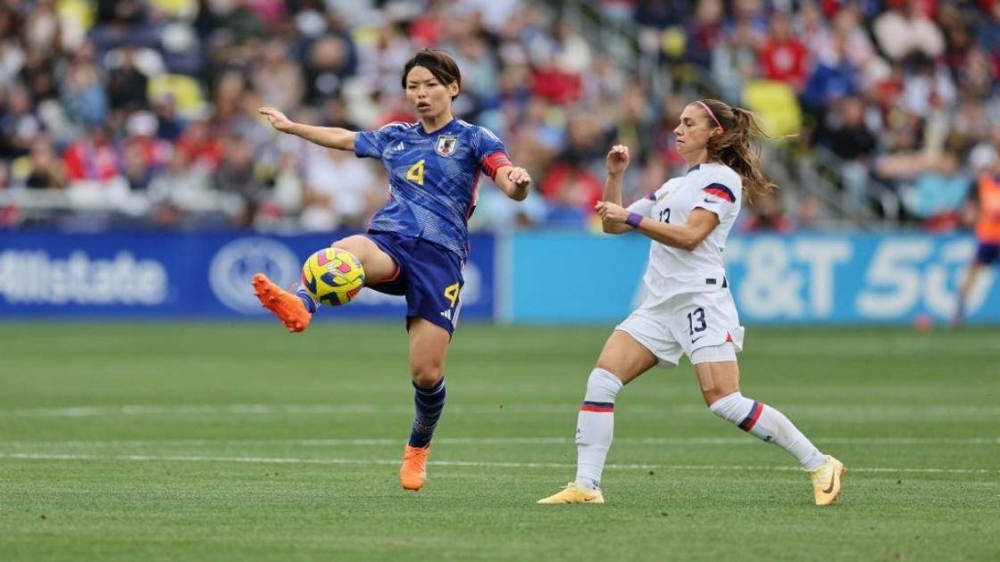Tristan LAVALETTE It was France versus Brazil and one of the biggest matches so far at the Women's World Cup, but unless you paid, you could not watch it on primetime television in host nation Australia.
The rugby union clash between Australia and New Zealand's All Blacks, Ashes cricket, Australian Rules and swimming were all free to watch on Saturday evening.
But if you wanted to catch the heavyweight World Cup group match in Brisbane -- which France won 2-1 with a late goal -- you had to subscribe to a streaming sports channel.
The majority of World Cup games in co-hosts Australia and New Zealand are behind a paywall.
Experts warn this could hurt efforts to grow football in two countries where the sport lags in the popularity stakes compared to the likes of cricket and rugby.
"Live viewing of sport helps encourage participation and provide a spark for youngsters," Clare Hanlon, of Women in Sport at Victoria University, said.
"Being on television is also an opportunity to attract sponsors which helps grow the game," added Hanlon, whose role includes advancing women in sport.
- 'Disappointing' -Of the 64 matches at the month-long tournament, 15 are free to air on Australian broadcaster Seven Network.
As part of government anti-siphoning laws, all of Australia's matches and the final are required to be part of the free-to-air slate.
But a paid subscription with main broadcaster Optus Sport is the only way to watch the entire tournament in Australia, costing AUS$24.99 (US$17) a month or $6.99 for existing customers.
It is a similar situation in New Zealand.
There, all 64 matches can be viewed on subscription service Sky Television.
There is free-to-air coverage of 26 games, including all three of New Zealand's group games and both of the semi-finals and the final.
The home team were knocked out of the tournament in the group phase on Sunday.
Football fan Christine Jones is refusing to pay for another subscription.
"There are only so many subscriptions you can have these days," she said ahead of attending the Canada versus Ireland game in Perth.
"It can be hard to follow the tournament properly when you're only watching the odd game."
Chris Reilly has been criss-crossing Australia having travelled from Ireland to support his team, whose debut tournament ended on Monday in the group phase.
When not in attendance, Reilly has resorted to pubs and bars to watch the tournament.
"I was shocked it's not on free to air here because all the games are on in Ireland," he said.
"Everything else has been great about the tournament, but that has been disappointing."
- Legacy?
-All the matches are free to air in France, Germany, Spain, the United Kingdom and Italy -- all already established football countries -- after governing body FIFA struck a last-minute deal with broadcasters there.
At the previous Women's World Cup, in France in 2019, all the matches were shown on the paying service Canal Plus.
Broadcaster TF1 showed for free all the home team's matches, six of the eight last-16 ties and all games from the quarter-finals onwards.
FIFA, the sport's governing body, declined to comment on what the repercussions were for growing football in Australia and New Zealand.
But the local governing body, Football Australia, said the money FIFA brought in from selling broadcast rights went back into the game everywhere.
"As FIFA has stated, broadcast rights form an important revenue stream to support increased player payments and enable FIFA to invest in the women's game across the globe," a Football Australia spokesperson said.
"Australian fans have two passionate broadcasters covering this FIFA Women's World Cup, delivering record viewership and streaming numbers, where the local market is accustomed to having to access sporting content via paid platforms."
Football Australia hopes the showpiece -- which has played out to generally strong crowds at stadiums, especially in Australia -- can leave a legacy for the sport in the country, especially in the women's game.
Females currently represent about a quarter of the almost two million football players in Australia, a figure Football Australia wants to increase to 50 percent by 2027.
But Hanlon warned: "To do that soccer needs to be more visible, part of the everyday conversation.
"World Cup games not being on free to air is a massive opportunity missed."

